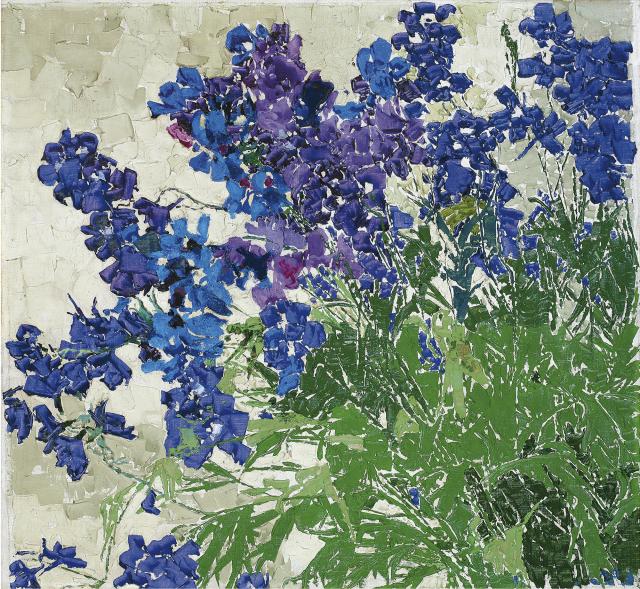Nature is a primordial source of inspiration for Augusto Giacometti. Butterflies, foliage and petals constitute motifs rich in pictorial possibilities for the artist. He enjoyed describing them in an abbreviated, colourful or sinuous way in compositions verging on abstraction, this at the outset of the twentieth century before that aesthetic movement was even theorised.
In thick paint he inscribed pared-down forms made up of brushstrokes that are laid over one another or placed side by side, and played with different tonalities through a technique that is akin to Neo-Impressionism and Tachism with a Cézannian echo. Generally applied with the painter’s knife to a smooth bright background that lets reserves show through, thick touches of paint form a dancing, fragmented, partial image that infuses the whole of the composition with a dynamic energy.
It is essentially colour that fuelled Augusto’s thinking about art. Between 1910 and 1917 he created what historians have called “chromatic fantasies”. Rittersporn (Larkspur) is one of them. Gathered into a spray of flowers shooting diagonally across the axis of the painting, these larkspurs shimmer with blues and violets, strongly contrasting with the background, which has been left fairly clear, only barely covered by a few shades of white and grey – intensifying the bright presence of the petals.
The flowers are reduced to their essential expression, no annoying details, no minutiae in the pictorial treatment, which aims to be swift and expressive, and remains virtuosic all the same. With a combination of broad and more modest brushstrokes, Augusto Giacometti manages to free his motif from the constraints of realism and make it sing with colour and life. In the artist’s lifetime, this kind of rendering made him famous among an extensive clientele.
In thick paint he inscribed pared-down forms made up of brushstrokes that are laid over one another or placed side by side, and played with different tonalities through a technique that is akin to Neo-Impressionism and Tachism with a Cézannian echo. Generally applied with the painter’s knife to a smooth bright background that lets reserves show through, thick touches of paint form a dancing, fragmented, partial image that infuses the whole of the composition with a dynamic energy.
It is essentially colour that fuelled Augusto’s thinking about art. Between 1910 and 1917 he created what historians have called “chromatic fantasies”. Rittersporn (Larkspur) is one of them. Gathered into a spray of flowers shooting diagonally across the axis of the painting, these larkspurs shimmer with blues and violets, strongly contrasting with the background, which has been left fairly clear, only barely covered by a few shades of white and grey – intensifying the bright presence of the petals.
The flowers are reduced to their essential expression, no annoying details, no minutiae in the pictorial treatment, which aims to be swift and expressive, and remains virtuosic all the same. With a combination of broad and more modest brushstrokes, Augusto Giacometti manages to free his motif from the constraints of realism and make it sing with colour and life. In the artist’s lifetime, this kind of rendering made him famous among an extensive clientele.
